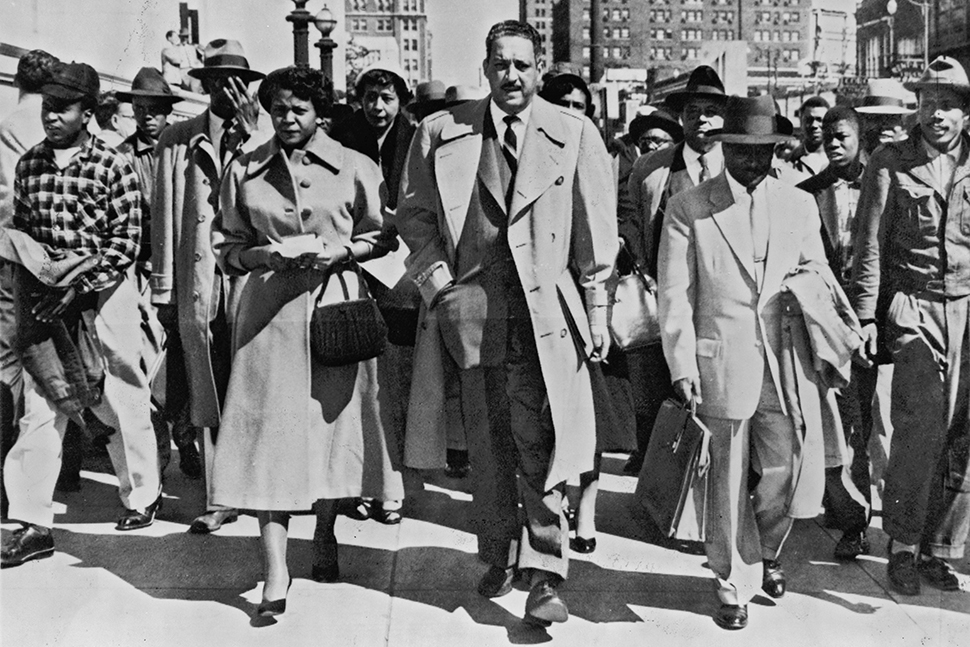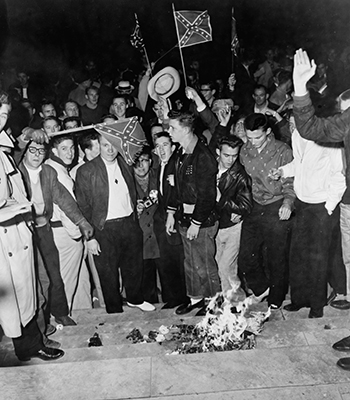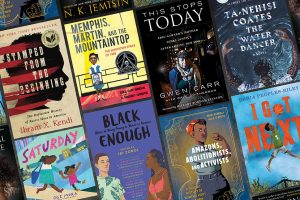
Last March, when I read the New York Times obituary for Autherine Foster (born Autherine Lucy), the first Black student to be accepted at University of Alabama, and found out about the riots that greeted her there in 1956, I was floored to learn that her intention had been to earn a degree in library science.
Here’s what I found in my research—which involved 1,200 newspaper and periodical articles—when I looked into her story.
After graduating in 1952 from the historically Black college and university of Miles College in Fairfield, Alabama, Lucy and her friend Pollie Myers decided to apply to the all-white University of Alabama in Tuscaloosa. Because neither identified race on their application, both were accepted on qualifications alone. “We shall be glad to welcome you to our campus,” their acceptance letters read. “You will find it a delightful place in which to live and work.”
When they showed up to enroll in September, however, both were refused admission because of their race. In response, the National Association for the Advancement of Colored People (NAACP) decided to file suit. Lawyers Thurgood Marshall and Constance Baker Motley spearheaded the effort from New York; Arthur Shores, a Black attorney from Alabama, represented them locally. As the case worked its way through the courts in subsequent years, Myers had a son, married, and eventually divorced.
Finally, on July 1, 1955, a Fifth Circuit federal judge ordered the university to admit the two women; the university admitted Lucy but denied Myers admission because her “conduct and marital record” violated the university’s moral code. When Lucy showed up to register on February 1, 1956, she was told she could not live in a campus dormitory because it “might endanger the safety or result in sociological disadvantage of the students.” Lucy did not fight it; she lived in Birmingham, and for the few days she was on campus she commuted.
On Friday, February 3, Lucy walked into her first class. Twenty-four policemen guarded the door and halls. She sat alone in the first row and the instructor ignored her throughout the class, but the day otherwise passed without incident. That evening, a crowd of 1,000 amassed in front of the student union after a basketball game and, on a subsequent march downtown, sang “Dixie,” waved Confederate flags, and chanted phrases like “Hey, hey, ho, ho, Autherine has gotta go,” and “Keep ’Bama white.” Someone set a cross on fire on the main town square; others set off firecrackers. The crowd dispersed on its own at about 2 a.m. Two more crowds assembled on Saturday and Sunday evenings.
While Lucy was in her first class early Monday morning, 300 white people gathered outside the classroom building ready to pelt her with eggs when she came out. Hoping to avoid trouble, a university official tried to sneak her into a car after class to drive to Graves Hall, which housed the library science department where she had a children’s literature class. Crowd members detected the attempted deception, however, and began throwing eggs. One hit Lucy. As the car sped away, someone else threw a brick through the car’s rear window, shattering glass on its occupants. Fortunately, the car made it to Graves Hall and Lucy was hustled inside.

During that class, the crowd outside grew to 1,000 and surrounded the building. “It was mostly the Klan,” not students, Assistant to the University President Jefferson Bennett later recalled in an interview with the Orlando Sentinel. Some shouted “Kill her!” Others barked “Lynch her!” After her class, officials hurried Lucy into a police car, where she lay on the floor as it drove through the mob. “There is no doubt in my mind,” one official said later, “if the crowd had gotten to her, they would have killed her.”
That night, university trustees exercised what they called their “police powers,” and “to prevent further violence and ensure her safety,” they barred Lucy from attending classes. By that time yet another crowd—this one comprising mostly laborers from a local tire manufacturer—had surrounded the university president’s house, chanting more hateful epithets. Police fired tear gas to disperse the mob.
In response to the university’s action preventing Lucy from attending classes, attorney Shores quickly charged that the disruption appeared “planned.” University officials, he argued, “acted in concert” with the rioters in order “to suspend” Lucy, and he asked the Fifth Circuit to force trustees to readmit her or hold them in contempt for defying a court order.
On February 29, just 26 days after she started classes, the Fifth Circuit heard Lucy’s case. On the witness stand, she calmly said her only reason for wanting to attend University of Alabama was to become a librarian. In his testimony, the dean of admissions framed her motivations another way: “Autherine J. Lucy is not a poor little Negro girl who is just trying to get an education. She never came here as an individual. It was always at the head of a delegation of lawyers, ministers, and wealthy friends from Birmingham.” At the close of the hearing, the judge ruled that university trustees had to readmit Lucy, but he also vacated contempt charges brought by the NAACP.
Hours later, the trustees permanently expelled Lucy for defaming the university with “outrageous, false, and baseless accusations” that it had conspired with rioters. White supremacists across the state declared victory. The executive secretary of the North Alabama White Citizens’ Council announced a mass meeting for March 9 and predicted 15,000 would attend.
Because Lucy’s situation had become so unsettled in Alabama, Thurgood Marshall came to fear for her life. He convinced her to return with him to New York and stay with his family for a period of time.
On March 8, Lucy announced she was giving up efforts to enter University of Alabama. In subsequent weeks she received five scholarship offers from foreign universities and was given an award by the National Newspaper Publishers Association for her “contribution to American democracy.” In early June of that year, 16,000 people attended a Madison Square Garden civil rights rally sponsored by the Brotherhood of Sleeping Car Porters. Speakers included civil rights icon Rosa Parks, labor and civil rights leader A. Philip Randolph, former First Lady Eleanor Roosevelt, and NAACP head Roy Wilkins.
Although the NAACP continued to pursue the case, the Fifth Circuit ultimately found that the university “had not exercised its authority to expel arbitrarily or on the basis of race or color.” And with that decision, Foster disappeared from the headlines. “I gave up and took a husband,” she later commented, marrying Texas minister Hugh L. Foster and spending the rest of her life as a wife, mother, and high school teacher—not as a librarian.
In 1988, after University of Alabama officially reversed her expulsion, she did return to campus to earn a master’s degree in education. When she received it, in 1992, the university endowed a $25,000 scholarship in her name. In 2020, the university dedicated the Autherine Lucy Clock Tower, and less than three weeks before she died in March of this year, renamed Graves Hall (originally named for a former Alabama governor and KKK leader) after her.
Between 1952, when she first tried to enter University of Alabama to study library science, and 1956, when the threat of violence forced her off campus, Foster received no mention in Library Literature, our profession’s major 20th-century indexing service. Because her story was not part of our profession’s discourse at the time it happened, it also never became part of our collective memory.
That silence in 1956 likely explains why many of us did not know about Lucy’s role in library history and is yet another reason why we must all advocate that ALA and other institutions help bring these stories to light by establishing a commission on racial issues. We must honor Lucy and others like her who endured so much as their stories come to light.


